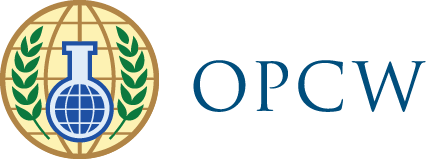OPCW recommends that the following information is included in the Pre-Inspection Briefing for a Schedule 2 facility.
A. Introduction of participants
-
Host team
- Names and functions
-
Facility personnel
- Participants names and functions
B. General information about the facility
-
Brief history of the facility and basic information
-
Type of industry (e.g., fertilizers, pharmaceuticals, pesticides, plasticizers, paints, soaps, etc.)
-
Management, organisation, operations, environment
-
Certificates of accreditations (e.g., ISO, FDA, etc.)
-
Security features (e.g., fence/wall, CCTV, patrols, others)
-
Any changes in the facility (operational, organisational) since the last inspection (if applicable)
-
Number of employees
-
Aerial view map indicating:
-
Location in relation to Point of Entry (POE)
-
Distance from POE
-
-
Facility layout indicating:
-
Boundaries and gates
-
Total area of the facility
-
C. Facility safety measures
-
Related to inspection conduct:
-
No operation/touching of equipment
-
Need for escort
-
-
Related to facility:
-
Safety hazards and safety procedures
-
Specific personal protective equipment
-
Emergency alarms and response procedures
-
Evacuation routes
-
Assembly points
-
Location of medical facilities and nearest hospital (in km)
-
D. Logistics and administrative information
-
Working hours: administration and operations
-
Working spaces
-
Inspectors and escort team working spaces (offices), and briefing areas
-
Set-up inspection team office (lockable, power supplied, available during the entire inspection period, equipped with desks and chairs)
-
-
Communications/mobile phone policy
-
Transportation
-
Lodging and meals
-
Security and badging procedures
E. Physical layout
-
Provide facility layout or comprehensive list indicating the following:
-
Declared Schedule 2 facility(s)
-
Schedule 3 and DOC/PSF facility(s) (if any)
-
Common infrastructure (e.g., QC/R&D laboratories, waste treatment, maintenance, warehouses, pilot facilities, medical facilities, etc.)
-
Non-declarable facilities (e.g., formulation, polymers, inorganic chemicals, etc.)
-
Other companies/facilities which may be physically located within the same boundary, but may not (operationally) form part of the facility
-
GPS reading point (if coordinates are declared)
-
F. Detailed information – quantitative information
-
Declaration figures (indicate any changes/discrepancies in relation to the declared data)
-
Identification of Schedule 2 facility(s) (e.g., building/structure, location, etc.)
-
Main activities of Schedule 2 facilities(expressed in terms of PGC)
-
Activities in relation to Schedule 2 chemicals (production (PROD) processing (PROC), consumption (CONS))
-
Characteristics of the facility(s) (dedicated, multipurpose)
-
Other activities (expressed in terms of codes B04, B05, B06)
-
Production capacity and method of calculation (if applicable)
-
Specific information in each Schedule 2 chemical (IUPAC/trade names)
-
G. Overview of declared Schedule 2 activities
-
Consider inclusion of the following for each Schedule 2 facility:
-
Chemical PROD, PROC, CONS quantities (e.g., annual summary)
-
Types of chemical reaction(s) with reaction schemes/process diagrams (including downstream processes, e.g., filtration, distillation, centrifugation, etc.)
-
Materials of construction (e.g., SS, CS, Hastelloy, etc.)
-
Mode of operation: batch/continuous
-
Dedicated/multipurpose
-
Type of control (e.g., manual, automatic, etc.)
-
Associated infrastructure (e.g., tank farms, laboratories, etc.)
-
Specific safety features (e.g., detectors, PPE)
-
-
List all scheduled chemicals on the facility, even if under threshold levels
H. Records to be reviewed
-
The records review process is not part of the PIB and therefore these documents should not be included in the PIB material.
-
It is highly recommended to have these documents ready at the beginning of the inspection, to optimize the inspection process.
-
The following is a non-exhaustive list of relevant records generally requested and accessed by OPCW inspectors during the records review process
|
Record name |
Purpose |
|
|
Certifications (e.g., ISO) and Business Registration documentation |
To verify name, owner, and address of the facility |
|
|
Annual/monthly summaries in relation to (PROD, PROC, CONS, Import, Export) |
To verify the level of declared activities, non-diversion |
|
|
Batch records/daily inventory data/on-screen data |
To cross-check the integrity of the recording system |
|
|
Complete list of chemicals handled on site |
Absence of Schedule 1 and undeclared Schedule chemicals and activities |
|
|
Waste analysis/emission analysis |
Non-diversion and absence of any Schedule chemicals |
|
|
COA of Schedule 2 |
Purity of Schedule 2 chemicals |
|
|
Technical data (SDS, basic chemistry) |
Identify chemical structure, composition of a mixture |
|
|
Explanation for discrepancy (if any) |
Identification of causes (calibration related, Schedule 2 chemical destruction) |
|
|
Methodology for recording systems |
Confirm the process of data capturing and register |
|
I. Mass Balance – examples
-
It is recommended that the facility perform Mass Balance calculation in advance. It helps identify potential issues and prepare the rationales.
List of acronyms
|
Acronym |
Definition |
|
CCTV |
Closed Circuit Television |
|
COA |
Certificate of Analysis |
|
CWC |
Chemical Weapons Convention |
|
CS |
Carbon Steel |
|
FDA |
Food and Drug Administration |
|
GPS |
Global Positioning System |
|
ISO |
International Standard Organization |
|
IUPAC |
International Union of Pure and Applied Chemistry |
|
OCPF |
Other Chemical Production Facilities |
|
PGC |
Product Group Code |
|
PPE |
Personal Protective Equipment |
|
SDS |
Safety Data Sheet |
|
SS |
Stainless Steel |
|
VA |
Verification Annex |
References
Further examples and guidance on how to prepare a PIB:
